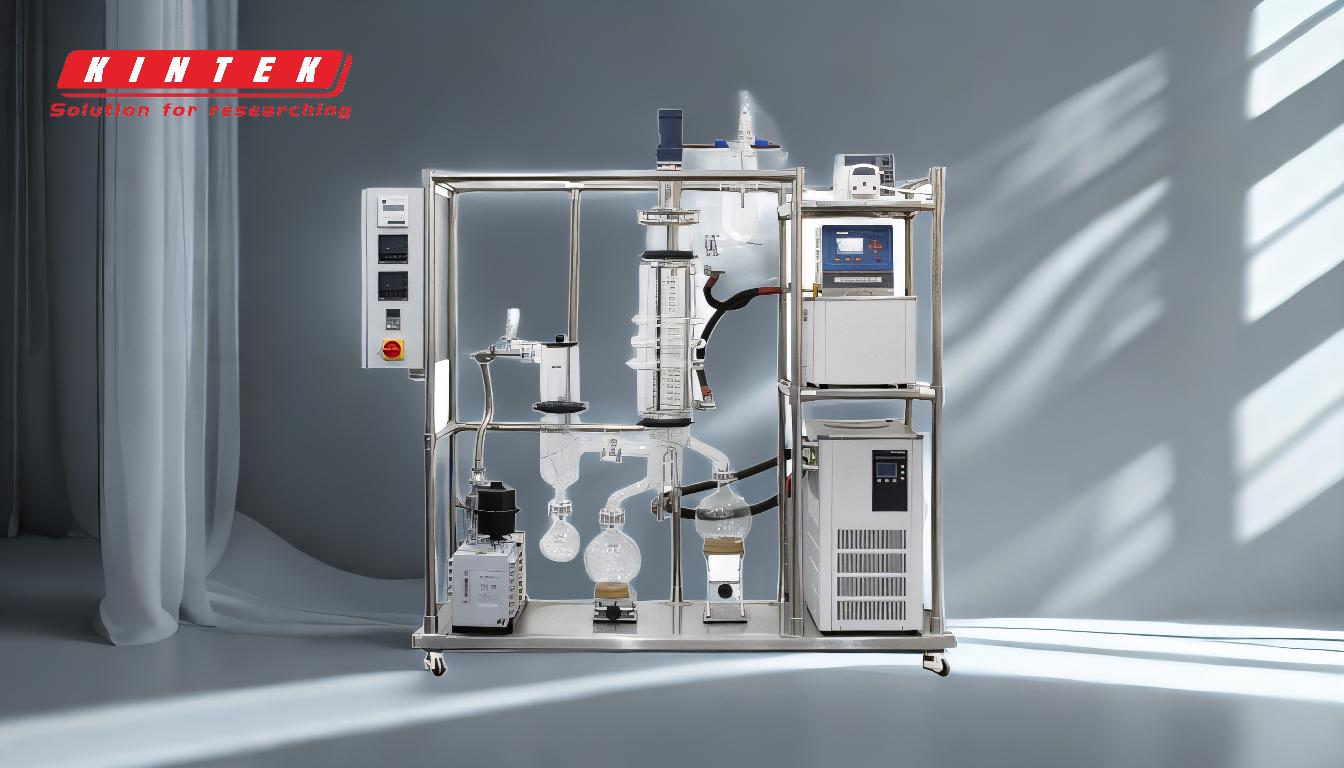Simple distillation and fractional distillation are both techniques used to separate liquids based on their boiling points, but they differ significantly in their mechanisms and applications. Simple distillation is suitable for separating liquids with significantly different boiling points, while fractional distillation is designed for separating liquids with closer boiling points. The primary difference lies in the use of a fractionating column in fractional distillation, which allows for multiple condensation and evaporation cycles, enhancing the separation of components. Fractional distillation is more effective for complex mixtures but is also more expensive and complex to operate. Both methods are widely used in industries such as petroleum refining and alcohol production.
Key Points Explained:

-
Mechanism of Separation:
- Simple Distillation: This method involves heating a liquid mixture to its boiling point, allowing the more volatile component (lower boiling point) to vaporize first. The vapor is then condensed back into a liquid and collected. It is effective for separating liquids with a significant difference in boiling points (typically greater than 25°C).
- Fractional Distillation: This method also involves heating the mixture, but the vapor passes through a fractionating column before condensation. The column provides multiple stages of vapor-liquid contact, allowing for repeated condensation and evaporation. This process enhances the separation of liquids with closer boiling points (typically less than 25°C difference).
-
Use of Fractionating Column:
- Simple Distillation: Does not use a fractionating column. The separation relies solely on the difference in boiling points and a single condensation step.
- Fractional Distillation: Utilizes a fractionating column, which is packed with materials that provide a large surface area for vapor-liquid interaction. This column creates a temperature gradient, allowing for more precise separation of components with similar boiling points.
-
Efficiency and Purity:
- Simple Distillation: Less efficient for separating components with similar boiling points. The purity of the separated components is generally lower compared to fractional distillation.
- Fractional Distillation: More efficient and capable of achieving higher purity levels due to the multiple stages of separation within the fractionating column.
-
Applications:
- Simple Distillation: Commonly used in laboratories and industries for purifying liquids with distinct boiling points, such as separating water from salt or purifying solvents.
- Fractional Distillation: Widely used in industries like petroleum refining and alcohol production, where complex mixtures with closely related boiling points need to be separated. For example, it is used to separate crude oil into various fractions like gasoline, diesel, and kerosene.
-
Cost and Complexity:
- Simple Distillation: Less expensive and simpler to operate. It requires minimal equipment and is easier to set up and maintain.
- Fractional Distillation: More expensive due to the need for a fractionating column and more complex equipment. It also requires more precise control over temperature and pressure.
-
Temperature Gradient:
- Simple Distillation: Operates at a constant temperature, focusing on the boiling point of the most volatile component.
- Fractional Distillation: Utilizes a temperature gradient within the fractionating column, allowing for the separation of components with closer boiling points. The temperature decreases as the vapor rises through the column, facilitating the condensation of higher boiling point components at lower levels.
-
Industrial Relevance:
- Simple Distillation: Suitable for small-scale or less complex separations, often used in laboratories or for specific industrial applications where high purity is not critical.
- Fractional Distillation: Essential in large-scale industrial processes where high purity and precise separation are required, such as in the production of chemicals, fuels, and alcoholic beverages.
In summary, while both simple and fractional distillation serve the purpose of separating liquid mixtures based on boiling points, fractional distillation offers a more refined and efficient separation process, especially for mixtures with closely related boiling points. The choice between the two methods depends on the specific requirements of the separation process, including the nature of the mixture, desired purity, and scale of operation.
Summary Table:
| Aspect | Simple Distillation | Fractional Distillation |
|---|---|---|
| Mechanism | Single condensation step; no fractionating column. | Uses a fractionating column for multiple condensation and evaporation cycles. |
| Efficiency | Less efficient for liquids with similar boiling points. | More efficient for separating liquids with closer boiling points. |
| Purity | Lower purity levels. | Higher purity levels due to repeated separation stages. |
| Applications | Suitable for liquids with distinct boiling points (e.g., water and salt). | Ideal for complex mixtures like crude oil or alcohol production. |
| Cost & Complexity | Less expensive and simpler to operate. | More expensive and complex due to additional equipment and precise control requirements. |
| Temperature Gradient | Operates at a constant temperature. | Utilizes a temperature gradient within the fractionating column. |
| Industrial Use | Small-scale or less complex separations (e.g., labs). | Large-scale industrial processes requiring high purity (e.g., petroleum refining). |
Need help choosing the right distillation method for your application? Contact our experts today!










